-
 Bitcoin
Bitcoin $118000
-1.29% -
 Ethereum
Ethereum $3758
-3.52% -
 XRP
XRP $3.113
-5.04% -
 Tether USDt
Tether USDt $0.9998
-0.05% -
 BNB
BNB $818.5
-3.23% -
 Solana
Solana $181.9
-5.10% -
 USDC
USDC $0.9997
-0.04% -
 Dogecoin
Dogecoin $0.2239
-8.33% -
 TRON
TRON $0.3233
0.95% -
 Cardano
Cardano $0.7842
-6.81% -
 Hyperliquid
Hyperliquid $43.35
-2.12% -
 Sui
Sui $3.894
-9.97% -
 Stellar
Stellar $0.4176
-6.99% -
 Chainlink
Chainlink $17.97
-6.68% -
 Bitcoin Cash
Bitcoin Cash $576.7
-2.30% -
 Hedera
Hedera $0.2671
-7.23% -
 Avalanche
Avalanche $24.64
-6.12% -
 UNUS SED LEO
UNUS SED LEO $8.972
0.08% -
 Litecoin
Litecoin $108.1
-6.55% -
 Toncoin
Toncoin $3.198
-5.94% -
 Shiba Inu
Shiba Inu $0.00001325
-6.80% -
 Ethena USDe
Ethena USDe $1.001
-0.04% -
 Uniswap
Uniswap $10.27
-7.02% -
 Polkadot
Polkadot $3.935
-7.49% -
 Monero
Monero $317.7
-2.24% -
 Dai
Dai $0.9999
0.00% -
 Bitget Token
Bitget Token $4.550
-3.85% -
 Pepe
Pepe $0.00001179
-8.68% -
 Cronos
Cronos $0.1418
-2.34% -
 Aave
Aave $286.2
-6.49%
How to combine the wave theory to calculate the target and stop loss of the current band?
Combining wave theory with current band analysis in crypto trading helps set precise targets and stop losses, enhancing decision-making in volatile markets.
Jun 10, 2025 at 04:36 am
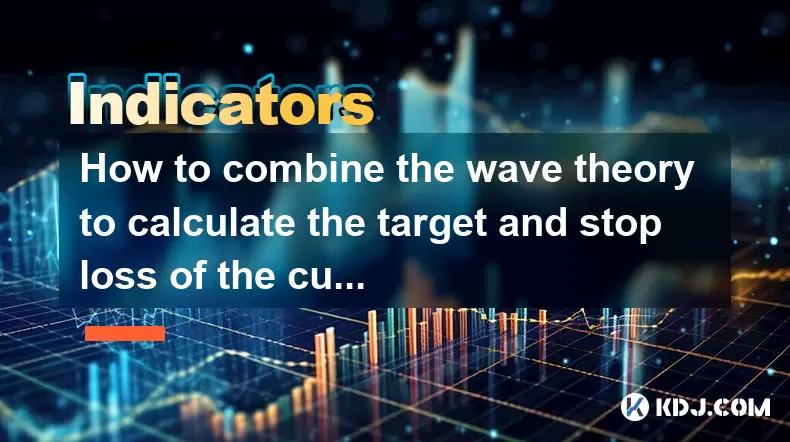
In the world of cryptocurrency trading, combining wave theory with current band analysis can be a powerful strategy for setting precise targets and stop losses. Wave theory, often referred to as Elliott Wave Theory, is a method used to analyze market cycles and predict future price movements. By integrating this with the analysis of current price bands, traders can enhance their decision-making process. This article will guide you through the steps and considerations necessary to effectively use these tools together.
Understanding Wave Theory
Wave theory posits that market prices move in repetitive cycles, which can be broken down into a series of waves. These waves are categorized into impulse waves and corrective waves. Impulse waves move in the direction of the larger trend and consist of five smaller waves, labeled as 1, 2, 3, 4, and 5. Corrective waves, on the other hand, move against the trend and are made up of three smaller waves, labeled as A, B, and C.
To effectively use wave theory in your trading strategy, you must first identify the current wave structure within the cryptocurrency market you are analyzing. This involves studying price charts to determine whether the market is in an impulse or corrective phase and labeling the waves accordingly.
Analyzing the Current Band
The current band refers to the price range within which a cryptocurrency is currently trading. This range is defined by support and resistance levels, which are critical for setting targets and stop losses. Support levels are the price points at which the market tends to find buying interest, preventing the price from falling further. Resistance levels, conversely, are the points at which selling interest is strong enough to halt an upward price movement.
To analyze the current band, you should observe the recent price action on the chart and identify the key support and resistance levels. These levels will serve as the boundaries of the band within which you will set your trading parameters.
Combining Wave Theory with the Current Band
To combine wave theory with the current band analysis, you need to integrate the wave patterns you have identified with the support and resistance levels of the band. Here's how you can do it:
Identify the Current Wave: Start by labeling the current wave structure on your price chart. Determine whether you are in an impulse or corrective wave and note the direction and potential endpoint of the current wave.
Align Waves with Band Levels: Once you have identified the current wave, align it with the support and resistance levels of the current band. For instance, if you are in wave 3 of an impulse wave and it is approaching a resistance level, this could be a potential target for taking profits.
Set Targets: Based on the wave structure and the current band, set your target prices. If you are in an impulse wave and approaching a resistance level, you might set your target just below this resistance. If you are in a corrective wave and approaching a support level, your target might be just above this support.
Set Stop Losses: Similarly, set your stop losses based on the wave structure and the current band. If you are in an impulse wave and the price drops below a key support level, this could be a signal to exit the trade. In a corrective wave, if the price breaks above a key resistance level, it might be time to close your position.
Practical Example in Cryptocurrency Trading
Let's consider a practical example using Bitcoin (BTC) to illustrate how to combine wave theory with the current band analysis.
Step 1: Identify the Current Wave: Suppose you observe that Bitcoin is in the third wave of an impulse wave, moving upwards. You label the waves on your chart accordingly.
Step 2: Analyze the Current Band: You identify that the current band for Bitcoin has a support level at $30,000 and a resistance level at $40,000.
Step 3: Align Waves with Band Levels: You notice that the third wave is approaching the resistance level of $40,000. This suggests that the wave might end near this level.
Step 4: Set Targets: Based on this analysis, you set your target price just below the resistance level, at $39,500, anticipating that the wave will peak here.
Step 5: Set Stop Losses: You set your stop loss just below the support level, at $29,500, to protect against a potential breakdown of the wave structure.
Adjusting for Volatility
Cryptocurrency markets are known for their high volatility, which can impact the accuracy of wave theory and band analysis. To account for this, you should:
Use Wider Bands: Consider using wider support and resistance levels to accommodate for larger price swings. This can help prevent premature exits from trades.
Monitor Wave Patterns Closely: Given the rapid changes in cryptocurrency markets, it's crucial to continuously monitor the wave patterns and adjust your analysis as new data becomes available.
Implement Trailing Stops: Trailing stops can be an effective way to lock in profits while allowing for potential further gains. As the price moves in your favor, you can adjust your stop loss to follow the price, maintaining a certain distance from the current market price.
Tools and Resources
To effectively combine wave theory with current band analysis, you will need access to reliable charting tools and resources. Some popular tools include:
TradingView: A comprehensive platform that offers advanced charting capabilities and the ability to draw wave patterns and identify support and resistance levels.
MetaTrader: Widely used in the cryptocurrency trading community, MetaTrader provides robust charting tools and the option to automate trading strategies.
Crypto-specific Platforms: Platforms like Binance and Coinbase offer built-in charting tools that can be used to analyze wave patterns and current bands.
By utilizing these tools, you can enhance your ability to accurately identify wave structures and set effective targets and stop losses within the current band.
Frequently Asked Questions
Q1: How often should I update my wave analysis in a volatile market like cryptocurrency?
A1: In a volatile market, it's advisable to update your wave analysis frequently, ideally on a daily basis or even more often if significant price movements occur. This ensures that your trading decisions are based on the most current market conditions.
Q2: Can wave theory be used effectively for short-term trading in cryptocurrency?
A2: Yes, wave theory can be applied to short-term trading in cryptocurrency. However, due to the high volatility, short-term traders need to be particularly diligent in monitoring wave patterns and adjusting their strategies quickly to respond to rapid market changes.
Q3: What are some common pitfalls to avoid when combining wave theory with band analysis?
A3: Common pitfalls include mislabeling waves due to incomplete data, setting targets and stop losses too tightly in a volatile market, and failing to adjust analysis as new price information becomes available. It's crucial to remain flexible and continuously refine your analysis.
Q4: Are there specific cryptocurrencies that are better suited for wave theory and band analysis?
A4: While wave theory and band analysis can be applied to any cryptocurrency, they are often more effective on cryptocurrencies with higher liquidity and trading volume, such as Bitcoin and Ethereum. These markets tend to have clearer wave patterns and more defined support and resistance levels.
Disclaimer:info@kdj.com
The information provided is not trading advice. kdj.com does not assume any responsibility for any investments made based on the information provided in this article. Cryptocurrencies are highly volatile and it is highly recommended that you invest with caution after thorough research!
If you believe that the content used on this website infringes your copyright, please contact us immediately (info@kdj.com) and we will delete it promptly.
- Bitcoin, Remittix Presale, and DeFi Remittance: A New Yorker's Take
- 2025-07-29 14:30:12
- Bitcoin Price Stagnation: Is the Cryptocurrency Market at a Crossroads?
- 2025-07-29 12:30:12
- Coinbase Eyes India: Acquisition of CoinDCX on the Horizon?
- 2025-07-29 12:30:12
- Cryptocurrency, Treasuries, and Companies: A New Era?
- 2025-07-29 12:50:12
- Zhipu AI's GLM-4.5: China's Open-Source Challenger to GPT-4
- 2025-07-29 12:50:12
- Meme Coins Gone Viral: Presales, Trolling Cats, and the Future of Crypto Hype
- 2025-07-29 14:30:12
Related knowledge
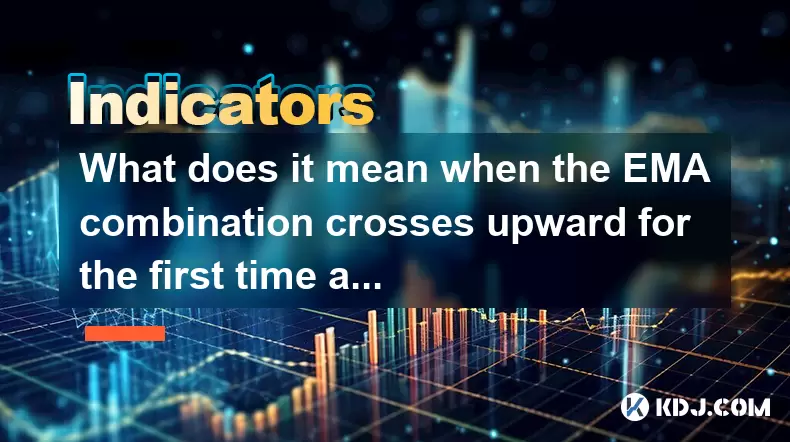
What does it mean when the EMA combination crosses upward for the first time after sideways trading?
Jul 28,2025 at 03:43pm
Understanding the EMA and Its Role in Technical AnalysisThe Exponential Moving Average (EMA) is a widely used technical indicator in cryptocurrency tr...
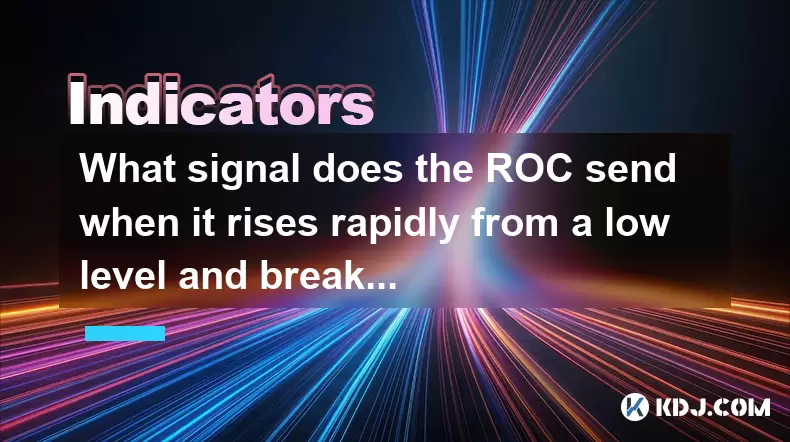
What signal does the ROC send when it rises rapidly from a low level and breaks through the zero axis?
Jul 27,2025 at 10:15am
Understanding the Rate of Change (ROC) IndicatorThe Rate of Change (ROC) is a momentum-based oscillator used in technical analysis to measure the perc...
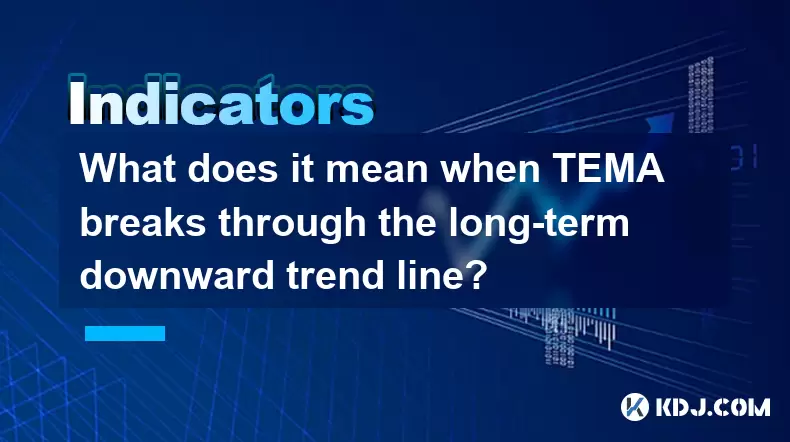
What does it mean when TEMA breaks through the long-term downward trend line?
Jul 29,2025 at 02:50pm
Understanding the Role of Smart Contracts in Decentralized Finance (DeFi)Smart contracts are self-executing agreements with the terms of the agreement...
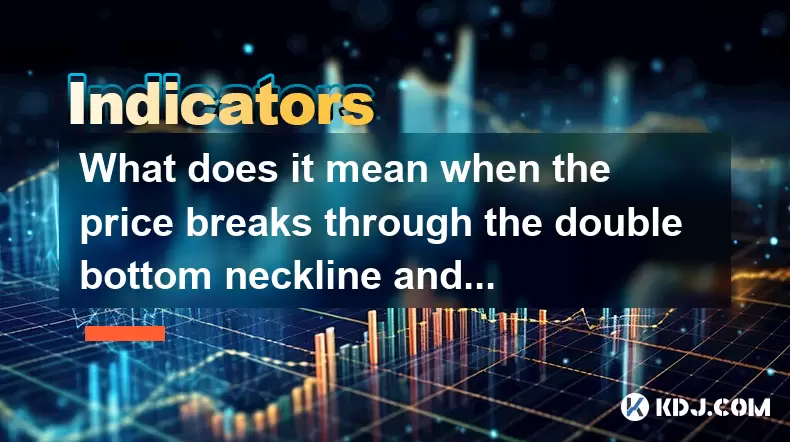
What does it mean when the price breaks through the double bottom neckline and the moving averages are arranged in a bullish pattern?
Jul 28,2025 at 10:57am
Understanding the Double Bottom PatternThe double bottom is a widely recognized reversal chart pattern in technical analysis, particularly within the ...
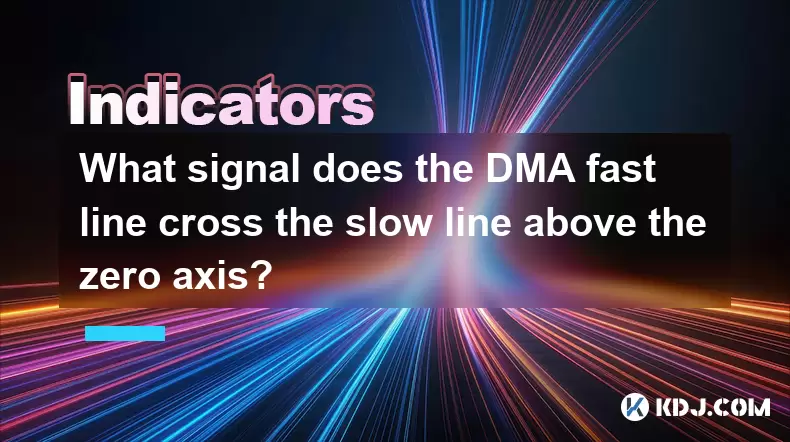
What signal does the DMA fast line cross the slow line above the zero axis?
Jul 28,2025 at 05:42am
Understanding the DMA Indicator and Its ComponentsThe DMA (Difference of Moving Averages) indicator is a technical analysis tool used in cryptocurrenc...
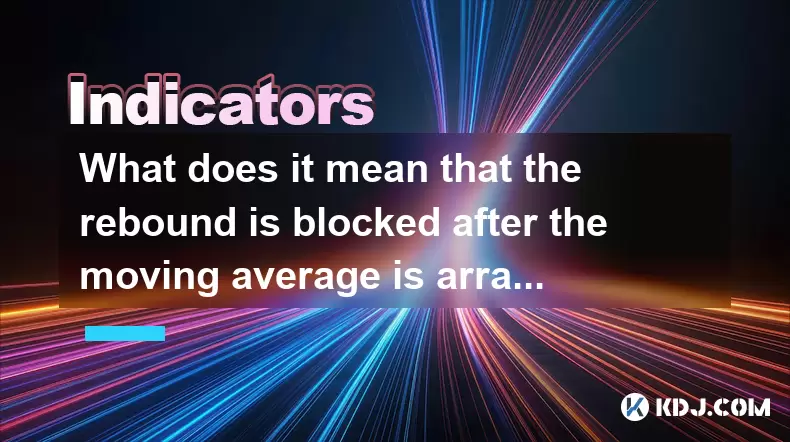
What does it mean that the rebound is blocked after the moving average is arranged in a short position for the first time?
Jul 26,2025 at 10:51am
Understanding the Short-Term Moving Average ConfigurationWhen traders refer to a 'short position arrangement' in moving averages, they are describing ...

What does it mean when the EMA combination crosses upward for the first time after sideways trading?
Jul 28,2025 at 03:43pm
Understanding the EMA and Its Role in Technical AnalysisThe Exponential Moving Average (EMA) is a widely used technical indicator in cryptocurrency tr...

What signal does the ROC send when it rises rapidly from a low level and breaks through the zero axis?
Jul 27,2025 at 10:15am
Understanding the Rate of Change (ROC) IndicatorThe Rate of Change (ROC) is a momentum-based oscillator used in technical analysis to measure the perc...

What does it mean when TEMA breaks through the long-term downward trend line?
Jul 29,2025 at 02:50pm
Understanding the Role of Smart Contracts in Decentralized Finance (DeFi)Smart contracts are self-executing agreements with the terms of the agreement...

What does it mean when the price breaks through the double bottom neckline and the moving averages are arranged in a bullish pattern?
Jul 28,2025 at 10:57am
Understanding the Double Bottom PatternThe double bottom is a widely recognized reversal chart pattern in technical analysis, particularly within the ...

What signal does the DMA fast line cross the slow line above the zero axis?
Jul 28,2025 at 05:42am
Understanding the DMA Indicator and Its ComponentsThe DMA (Difference of Moving Averages) indicator is a technical analysis tool used in cryptocurrenc...

What does it mean that the rebound is blocked after the moving average is arranged in a short position for the first time?
Jul 26,2025 at 10:51am
Understanding the Short-Term Moving Average ConfigurationWhen traders refer to a 'short position arrangement' in moving averages, they are describing ...
See all articles

























































































